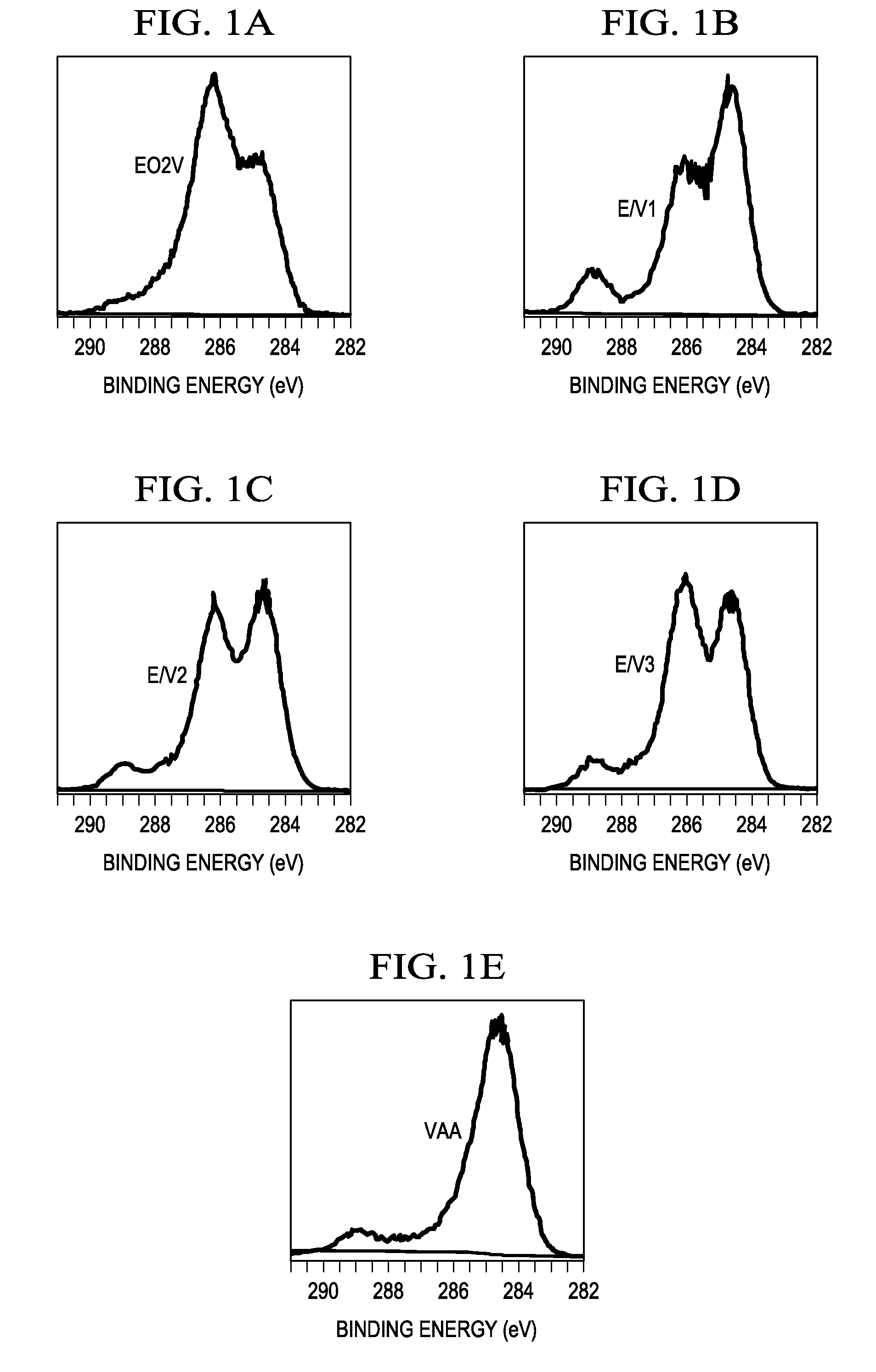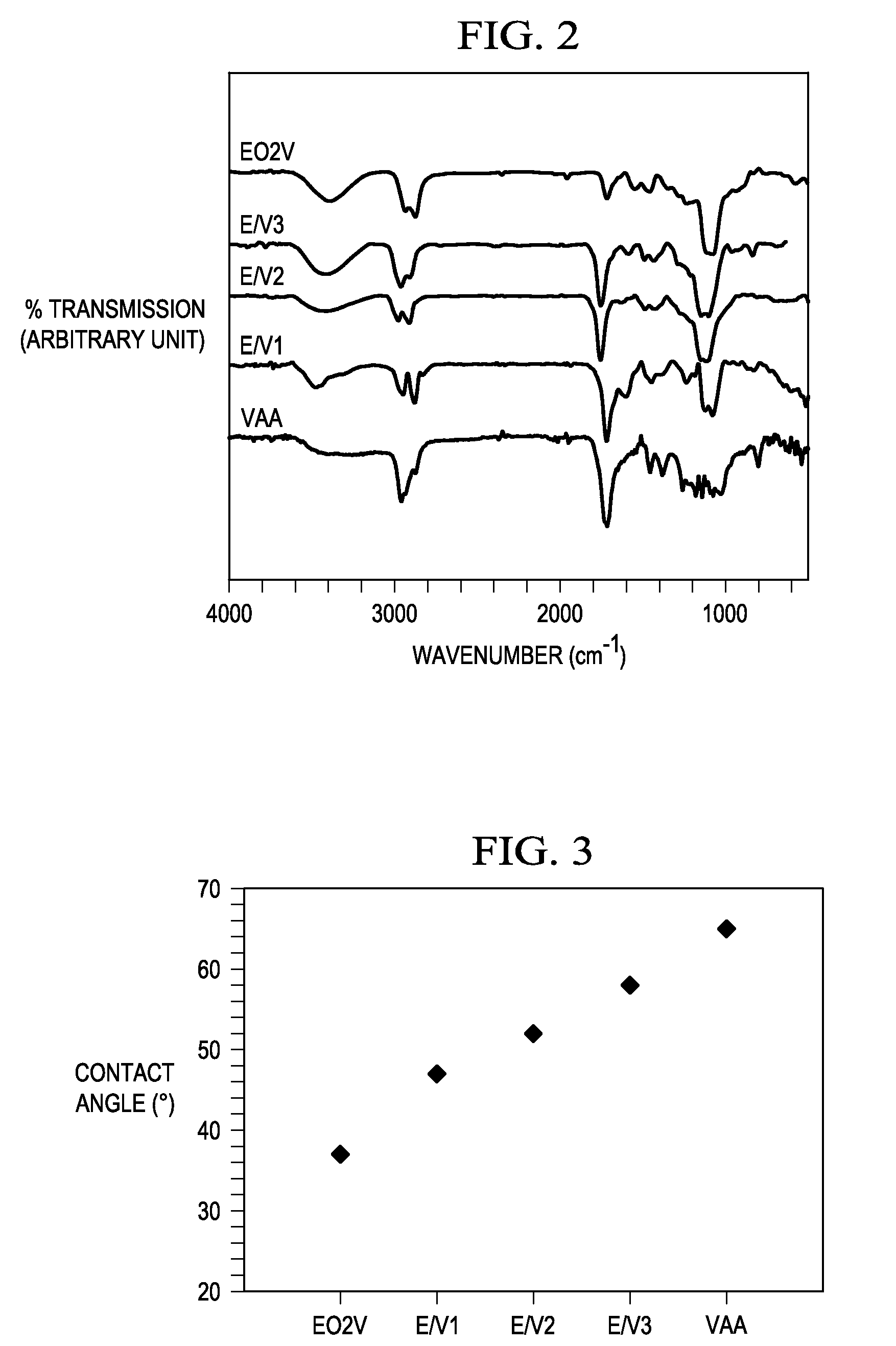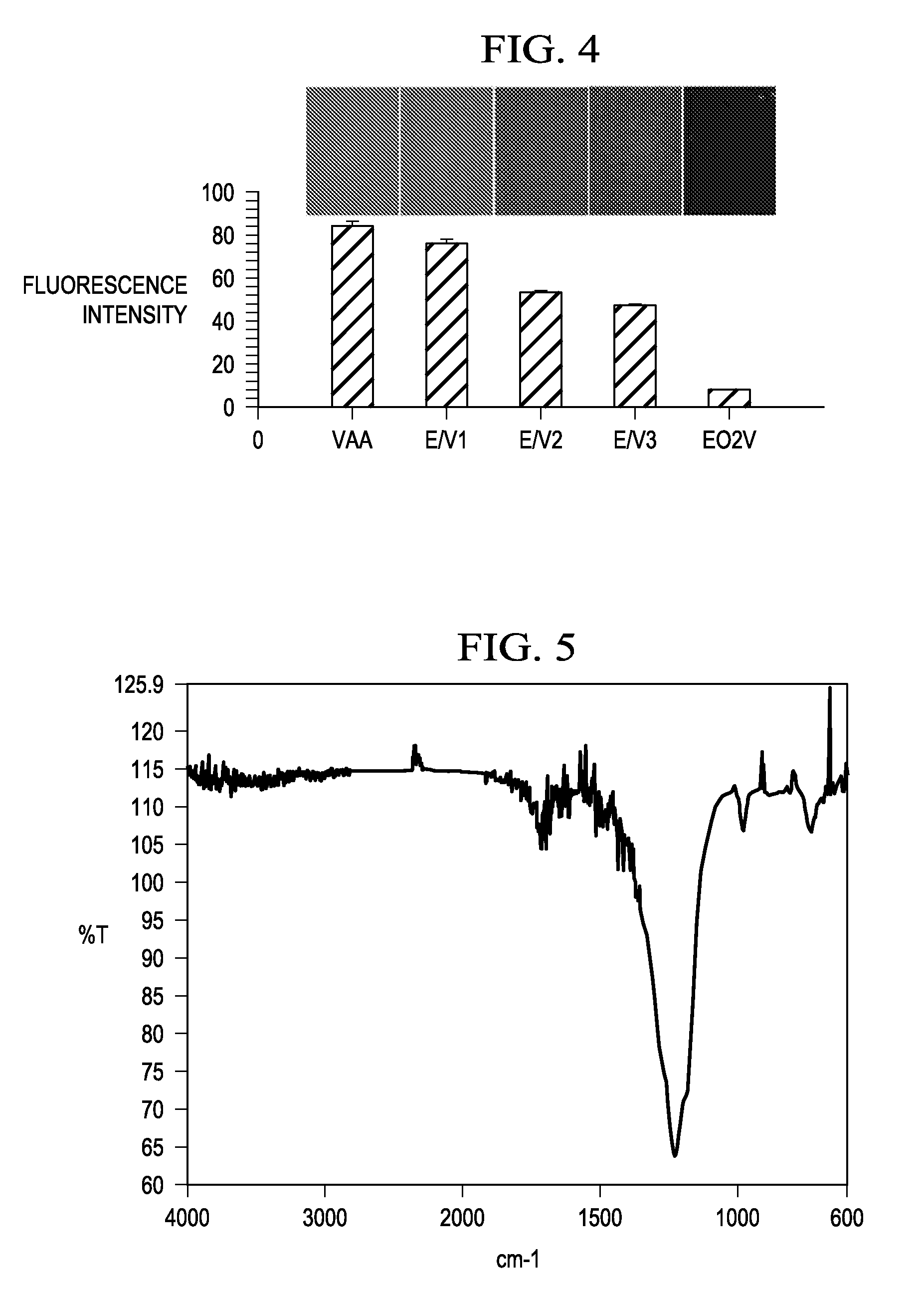Non-Fouling Receptor Labeled Multi-Functional Surfaces
a multi-functional surface and receptor technology, applied in the field of fabrication multi-functional surfaces, can solve the problems of reducing the adsorption of biomolecules on the surface, and adsorption is generally undesirable, and achieves the effects of reducing adsorption, preventing or controlling movement through media, and reducing adsorption
- Summary
- Abstract
- Description
- Claims
- Application Information
AI Technical Summary
Benefits of technology
Problems solved by technology
Method used
Image
Examples
example 1
[0028]After substrates were placed inside the reactor, a background pressure of 5 mtorr was achieved. Oxygen plasma, at a 100 W average power input, was employed to remove any carbonaceous residue left on the substrates. Monomer vapor was introduced into the reactor chamber and an RF glow discharge was maintained at 80 mtorr. Samples were prepared using pure VAA and EO2V. The VAA sample was prepared using plasma on and off times of 0.75 and 20 ms, peak power 200 W; whereas, the EO2V samples were produced at on:off ratios of 1 / 50 (ms), peak power 37 W (Table 1).
TABLE 1Plasma parameters for films deposition and films name.SamplePlasmaPressure (mTorr)NamePower (W)Duty CycleEO2VVAATotalEO2V37 1 / 5060—80E / V12000.1 / 30602080E / V21500.1 / 30602080E / V31000.1 / 30602080VAA2000.75 / 20 —8080
[0029]Additionally, samples were prepared from the mixed monomers, in which the partial pressures of the EO2V and VAA were 60 and 20 mtorr, respectively. In these runs, the peak plasma power input was varied from ...
example 2
[0035]The objective behind creation of the chemical compositional controllability illustrated in Example 1 was to demonstrate the utility of these surfaces in controlling non-specific biomolecule adsorptions, but, at the same time, permit attachment of specific target molecules to these surfaces. For this purpose, fluorescently labeled antibodies were covalently attached to the EO2V, E / V1, E / V2, E / V3 and VAA surfaces, described in Example 1. Goat anti-rabbit IgG antibodies, containing the Alexa 488 fluorescent functionality, were employed for this purpose. These antibodies were attached to the —COOH surface groups via conventional EDC / NHS coupling chemistry.[12] In this coupling reaction, amine groups from the antibody are covalently coupled to the carboxyl groups on the plasma modified surfaces.
[0036]FIG. 4 is a is a graph of the relative fluorescence intensity of the bifunctional surfaces having progressively higher EO content in reading from left to right. The fluorescence emissi...
example 3
[0037]The process described in Example 1 was basically repeated, but this time a monomer mixture of ethylene diamine (EDA) and EO2V was employed during the plasma deposition. The EDA was employed, in lieu of the VAA, so that amine groups could be co-deposited with the EO groups obtained from the EO2V monomer. As in the prior example, XPS, FT-IR and water contact angle measurements were made to confirm the controlled film chemistry attainable during plasma polymerization of the mixed monomers. Subsequently, the amine groups introduced were employed to attach a fluorescently labeled protein, albumin, to these surfaces, using the same EDC / NHS chemistry as employed in Example 1. In this latter case, the carboxyl groups of the protein are coupled covalently to the amine groups deposited on the plasma modified substrates. Fluorescence measurements again confirmed the attachment of the biomolecule to the surfaces in inverse proportion to the surface density of the EO groups deposited from ...
PUM
| Property | Measurement | Unit |
|---|---|---|
| peak power | aaaaa | aaaaa |
| peak power | aaaaa | aaaaa |
| binding energies | aaaaa | aaaaa |
Abstract
Description
Claims
Application Information
 Login to View More
Login to View More - R&D
- Intellectual Property
- Life Sciences
- Materials
- Tech Scout
- Unparalleled Data Quality
- Higher Quality Content
- 60% Fewer Hallucinations
Browse by: Latest US Patents, China's latest patents, Technical Efficacy Thesaurus, Application Domain, Technology Topic, Popular Technical Reports.
© 2025 PatSnap. All rights reserved.Legal|Privacy policy|Modern Slavery Act Transparency Statement|Sitemap|About US| Contact US: help@patsnap.com



